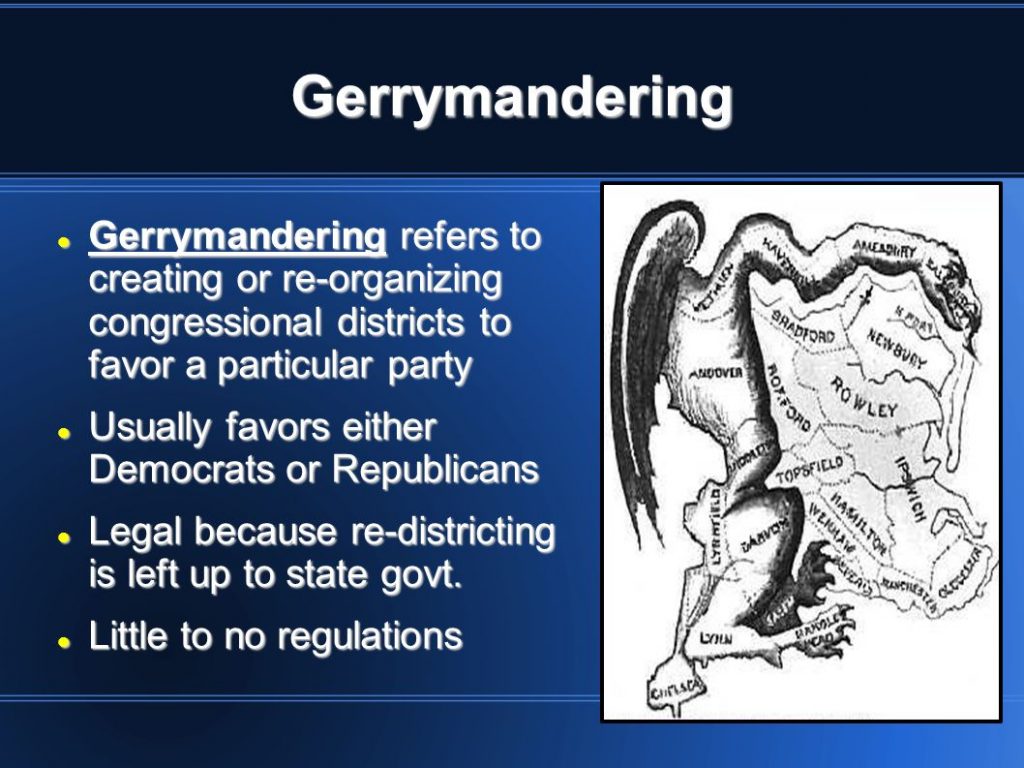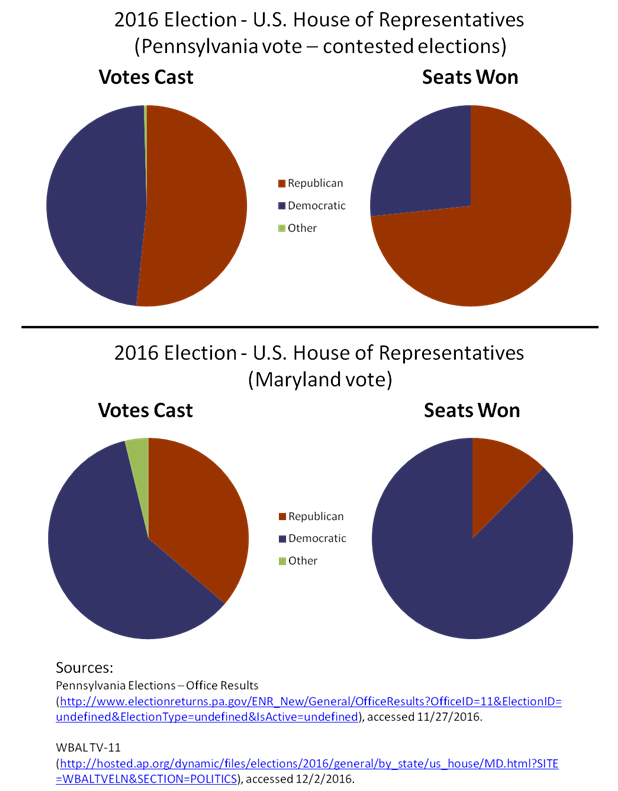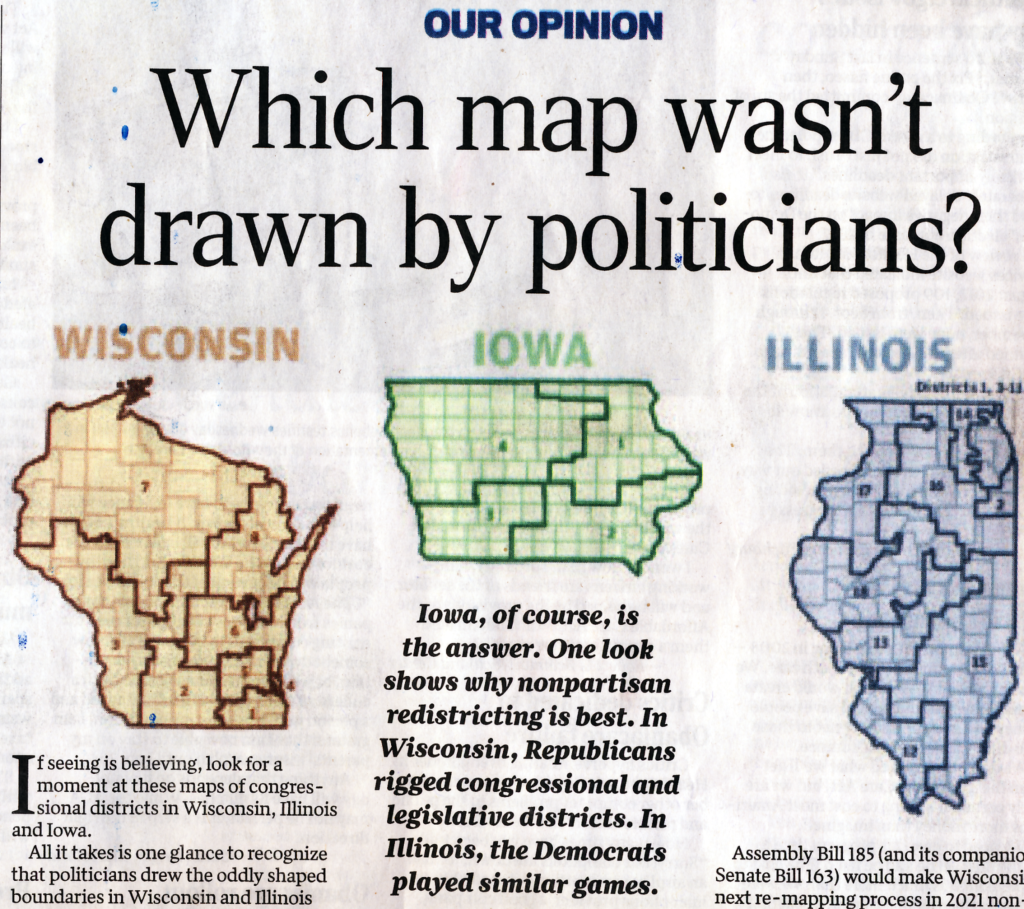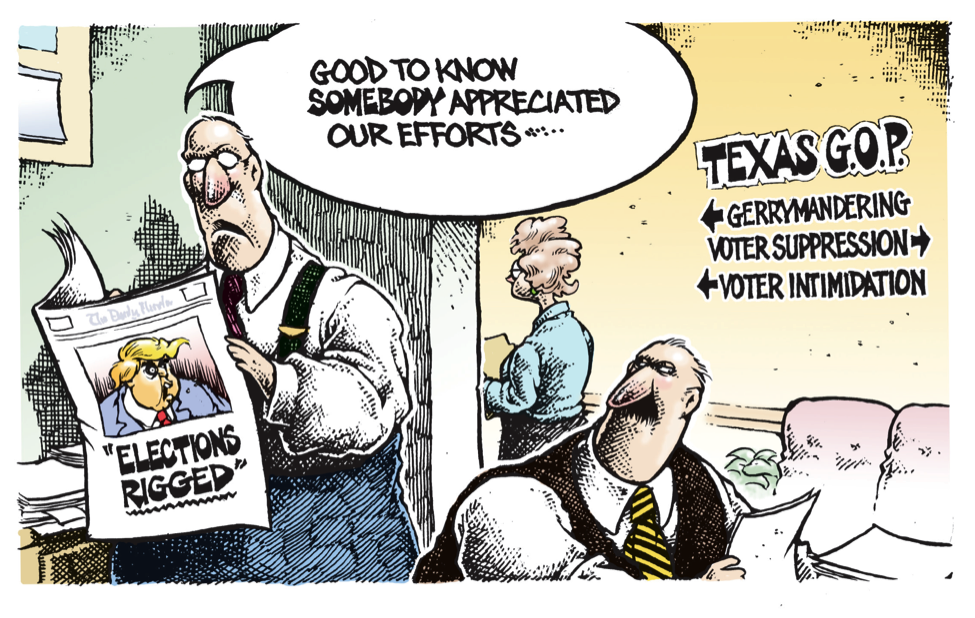
In 2017 the United States Supreme Court ruled that 2 congressional districts in North Carolina were unconstitutional, later in the year a panel of 3 federal judges ruled unanimously that Texas congressional districts 27 and 35 were also unconstitutional. In 2018 a panel of federal judges struck down all of North Carolina’s 13 congressional districts ruling that they violated the 14th amendment, and the Pennsylvania Supreme Court threw out all the commonwealth’s 18 congressional districts ruling that they violated the state’s constitution. All 4 of these cases have 2 things in common that mandate that it’s time to fire all politicians, both Republican and Democrat, completely removing them from having anything to do with drawing election district lines.

Race and Political Party Bias
The Supreme Court’s North Carolina ruling upheld a federal district court decision that struck down the state’s 1st and 12th Congressional districts. Because state lawmakers were guilty of gerrymandering the districts, they had packed black voters into them thereby minimizing the influence of black voters in other districts. Justice Elena Kagan writing the opinion for the majority said the 1st district “produced boundaries amplifying divisions between blacks and whites,” while in the 12th, “race, not politics, accounted for the district’s reconfiguration.”
The 3 judges in Texas found that Hispanic voters in Texas congressional district 27, represented by U.S. Rep. Blake Farenthold, R-Corpus Christi, were “intentionally deprived of their opportunity to elect a candidate of their choice.” Congressional district 35 — a Central Texas district represented by Democrat Lloyd Doggett of Austin — was deemed “an impermissible racial gerrymander” because lawmakers illegally used race as the predominant factor in drawing it, the judges wrote.
In the second strike against North Carolina, a panel of federal judges in 2018 went further than the Supreme Court did in its 2017 decision that struck down congressional districts 1 and 12. The judges decided that all North Carolina congressional districts were unconstitutional. Judge James A. Wynn Jr., in a biting 191-page opinion, said that Republicans in North Carolina’s Legislature had been “motivated by invidious partisan intent” as they carried out their obligation in 2016 to divide the state into 13 congressional districts, 10 of which are held by Republicans. The result, Judge Wynn wrote, violated the 14th Amendment’s guarantee of equal protection. In other words blatant gerrymandering!

While Pennsylvania Supreme Court’s six-paragraph order did not lay out which provisions of the constitution the justices believed it violated, its decision is assumed to validate the plaintiffs claim that the 18 districts were unconstitutionally gerrymandered to benefit Republicans.
Partisan Politics Drawing the Lines
The second thing these 4 cases have in common happens to be the real root of the problem, politicians drawing election district lines. The 2018 case throwing out North Carolina’s congressional map illustrates how partisan politics fosters gerrymandering. As the Washington Post reports Republican leaders in the North Carolina General Assembly openly conceded partisan gerrymandering in the 2016 map they drew to benefit Republicans.

They hired a consultant from the Republican National Committee to draw the map and excluded Democrats from the process, the court panel said. That consultant, the court said, testified that he was told: “to minimize the number of districts in which Democrats would have an opportunity to elect a Democratic candidate.” “Rather than seeking to advance any democratic or constitutional interest,” the panel wrote in a lengthy opinion, “the state legislator responsible for drawing the 2016 plan,” Rep. David Lewis, openly declared that he drew the map to advantage Republican candidates because he thinks “electing Republicans is better than electing Democrats.” But that said the panel, “is not a choice the Constitution allows legislative map drawers to make.”

Politicians will always draw election districts in a way that almost guarantees their Party’s election victories
No politician, Democrat or Republican, male or female, black or white can be trusted to objectively draw election district lines that don’t favor their political party. North Carolina is an example of Republican gerrymandering but Democrats are just as guilty of gerrymandering.
The country should follow the lead of the State of California, who in 2008 voted for the passage of California Proposition 11. This created the California Citizens Redistricting Commission responsible for determining the boundaries for the Senate, Assembly, and Board of Equalization districts in the state. Following the 2010 passage of California Proposition 20, the Commission was also assigned the responsibility of redrawing the state’s U.S. congressional district boundaries.
The 14 member commission of non-elected officials by law must draw election districts based on only the following 6 rank-ordered criteria:
- Population Equality: Districts must comply with the U.S. Constitution’s requirement of “one person, one vote”
- Federal Voting Rights Act: Districts must ensure an equal opportunity for minorities to elect a candidate of their choice
- Geographic Contiguity: All areas within a district must be connected to each other, except for the special case of islands
- Geographic Integrity: Districts shall minimize the division of cities, counties, local neighborhoods and communities of interests to the extent possible, without violating previous criteria. A community of interest is a contiguous population which shares common social and economic interests that should be included within a single district for purposes of its effective and fair representation.
- Geographic Compactness: To the extent practicable, and where this does not conflict with previous criteria, districts must not bypass nearby communities for more distant communities
- Nesting: To the extent practicable, and where this does not conflict with previous criteria, each Senate district will be composed of two whole Assembly districts, Board of Equalization districts will be composed of 10 Senate districts.

According to the law incumbents, political candidates or political parties cannot be considered when drawing district lines. Independent studies by the Public Policy Institute of California, the National Journal, and Ballotpedia have shown that California now has some of the most competitive districts in the nation.
If the Federal government followed California’s lead, by appointing a Federal Commission of non-elected citizens with the same 6 point criteria for drawing all 435 congressional districts, the current gridlock that exists in Congress would disappear. Phenomena like 90% of all Americans wanting background checks for gun buyers and a Republican-controlled Congress refusing to pass laws to enact them, would no longer be politically possible.

Gerrymandering produces elected officials who represent a distorted voice of the people, true American democracy demands that the voice of the people is totally and accurately reflected through its elected officials. To make this a reality it’s time to fire all politicians and remove them completely from the district drawing process. In other words, the time is over for letting politicians pick voters, now is the time to return to the original logic of our founding fathers who concluded that voters should pick the politicians!



